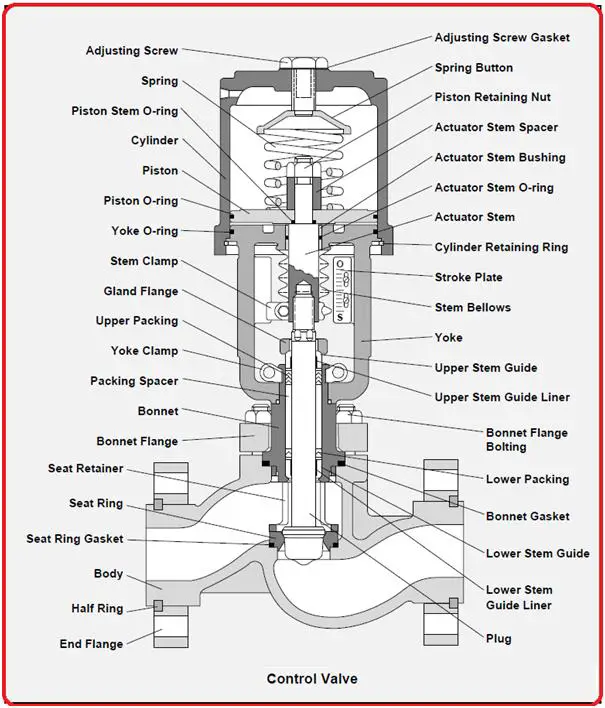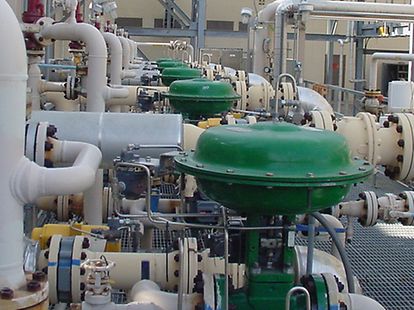Innovative Control Valves: Enhancing Precision and Reliability
Innovative Control Valves: Enhancing Precision and Reliability
Blog Article

Maximize Energy Cost Savings and Comfort With Advanced Building Automation Controls
In the world of modern-day architecture and center monitoring, the combination of innovative building automation controls stands as a crucial development. By utilizing the power of automation, structures can adjust, respond, and develop in means that were as soon as unthinkable.
Power Efficiency Perks
Energy effectiveness benefits can dramatically decrease power usage and operational prices in buildings. By implementing energy-efficient techniques and modern technologies, structure owners and drivers can accomplish considerable cost savings while additionally adding to environmental sustainability. One of the primary advantages of enhancing energy efficiency in buildings is the reduction of energy costs. Energy-efficient systems, such as advanced building automation controls, can enhance making use of sources like air conditioning, heating, and lighting, bring about reduced energy costs with time.
Additionally, enhanced power effectiveness can prolong the lifespan of building tools and systems. By operating much more successfully, heating and cooling systems, lighting fixture, and other structure components experience much less deterioration, causing minimized maintenance and substitute expenses. Additionally, energy-efficient buildings frequently regulate higher building values and rental rates, providing long-lasting financial advantages to owners.
Additionally, power effectiveness can enhance resident comfort and performance. Effectively managed interior environments with optimal illumination and thermal problems create a more enjoyable and helpful office, leading to improved worker contentment and efficiency. On the whole, the energy efficiency advantages associated with innovative building automation controls are diverse, including expense financial savings, environmental stewardship, and passenger wellness.
Enhanced Comfort Control
Enhancing comfort control in structure environments calls for an advanced assimilation of advanced automation systems for optimal passenger wellness. By making use of sophisticated structure automation controls, facilities can customize the indoor environment to satisfy the certain needs and preferences of residents. control valves.
By incorporating these advanced controls, buildings can not just boost comfort however additionally boost power performance by maximizing system procedures based on actual occupancy and use patterns. Eventually, focusing on occupant comfort with innovative automation systems leads to a more delightful and healthier indoor environment.
Operational Effectiveness Improvements

In addition, the implementation of real-time surveillance and analytics tools allows structure drivers to identify energy ineffectiveness and functional anomalies promptly. By continuously keeping an eye on power usage patterns and system efficiency metrics, modifications can be made in real-time to optimize energy intake and guarantee peak functional performance. control valves. Furthermore, including need response techniques her latest blog into building automation controls can additionally enhance operational effectiveness by dynamically adjusting power use based on grid conditions and rates signals
Indoor Climate Optimization
Reliable interior environment optimization is a basic element of structure automation controls, ensuring residents' comfort and health while making best use of energy savings. By making use of advanced sensors and controls, building automation systems can continuously keep an eye on and adjust temperature level, moisture degrees, air high quality, and air flow to develop an optimum interior atmosphere. Preserving comfy and regular problems not just improves passenger fulfillment but also boosts performance and total wellness.
Interior environment optimization likewise plays a vital function in energy efficiency. By fine-tuning home heating, air conditioning, and air flow systems based on real-time information and tenancy patterns, building automation controls can substantially minimize energy intake - control valves. As an example, carrying out approaches such as demand-controlled air flow and thermal zoning can assist minimize power waste while making sure that each area of the structure obtains the required conditioning.

Sustainable Setting Creation
Building automation controls not just maximize interior climate problems for energy effectiveness and occupant convenience however also lay the structure for my link developing a lasting atmosphere through strategic monitoring of sources and systems. By integrating advanced structure automation innovations, such as sensors, actuators, and intelligent software, centers can monitor and adjust power use in real-time to decrease waste and lower their carbon footprint. These systems allow anticipating upkeep, determining prospective concerns before they escalate and optimizing tools efficiency to boost long life and effectiveness.
Furthermore, lasting environment development prolongs beyond power monitoring to encompass water conservation, waste reduction, and indoor air high quality renovation. Structure automation controls can regulate water usage, find leaks, and ensure correct waste disposal techniques, adding to general sustainability efforts. In addition, by keeping an eye on and controlling air flow and purification systems, these innovations improve resident health and performance while lowering energy usage connected with a/c procedures.
Final Thought
Finally, advanced structure automation controls deal considerable advantages in terms of power cost savings, convenience control, operational performance, interior climate optimization, and developing a lasting setting. By executing these controls, find out here now buildings can achieve optimal performance while reducing power usage and enhancing passenger convenience. It is noticeable that using sophisticated automation modern technology is essential in boosting building efficiency and creating a much more sustainable future.
Energy performance advantages can dramatically reduce power intake and functional prices in structures. On the whole, the power performance advantages linked with innovative structure automation controls are complex, incorporating cost savings, environmental stewardship, and resident health.
Additionally, including need reaction methods right into building automation controls can even more boost operational performance by dynamically readjusting energy usage based on grid problems and rates signals.
Structure automation controls not only enhance interior environment problems for power effectiveness and owner comfort but also lay the foundation for producing a lasting atmosphere with strategic management of systems and resources.In conclusion, progressed building automation regulates offer significant advantages in terms of energy cost savings, comfort control, functional effectiveness, interior environment optimization, and creating a lasting atmosphere.
Report this page